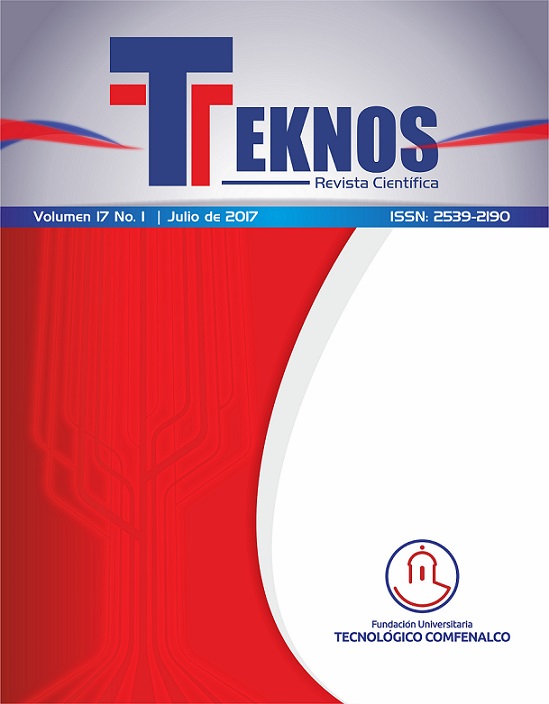Environmental evaluation associated to community close Higher Education Institution in Cartagena. Community Involvement Approach
DOI:
https://doi.org/10.25044/25392190.885Keywords:
environmental aspects, community, intervene, projects.Abstract
Environmental Education projects should be included transversally in educational institutions from the school to University, just as responsibility for the environment must be projected from academia and especially from higher education institutions to Local and / or regional communities; Since it is pertinent that in environmental matters contextualized problems are evaluated and it is the communities themselves that possess primary information of the environmental aspects with which they coexist. The objective of the project was to identify the environmental problems associated with the community surrounding the Fundación Universitaria Tecnológico Comfenalco Cartagena, based on a methodology of community participation, in which the community contributed its historical knowledge of the environmental aspects in the area, additional Compared the information obtained with an earlier study of the Cartagena Environmental Management project. As main results are evidenced, the environmental aspects identified as significant of negative character: noise, inadequate solid waste management and lack of afforestation.Downloads
References
Amérigo, M., Aragonés, J., De Frutos, B., Sevillano, V. & Cortés, B. (2007). Underlying dimensions of ecocentric and anthropocentric environmental beliefs. The Spanish Journal of Psychology, 10(1), 97-103.
Colmenares A., (2012). Voces y Silencios: Revista Latinoamericana de Educación, 3(1), 102-115.
Cummins, R.A. (2000). Objective and subjective quality of life: An interactive model. Social Indicators Research, 52, 55-72.
Dúran-Muriel, D. (2015). Ministerio de Educación Nacional. Obtenido de Boletín N° 9. Educación Superior en cifras. http://www.mineducacion.gov.co/1621/articles-350451_recurso_9.pdf.
González, A. & Amérigo, M. (1999). Actitudes hacia el medio ambiente y conducta ecológica. Psicothema, 11(1), 13-25.
Huppert, F., & Whittington, J., (2003). Evidence for the independence of positive and negative well - being: Implications for quality of life. British Journal of Health psychology, 8, 107-122.
Jiménez O., (2008). Índice de confort de la vegetación. Revista nodo, 3(5), 49-70.
Martínez A., (2005). Ruido por tráfico urbano: conceptos, medidas descriptivas y valoración económica. Revista economía & Administración,
(1), 1-49.
Misteli, M.; Angarica, L.; y Ortiz, R. (2009). Manual de Monitoreo y Evaluación Participativos. La Habana, Cuba: Programa de Innovación Agropecuaria Local (PIAL).
Moreno-Jiménez, A.; Fernández-García, F. (2003). El confort climático en los entornos residenciales de las capas altas, medias y bajas de la Comunidad de Madrid: otra forma de desigualdad socioespacial. La distribución espacial de la renta en la Comunidad de Madrid. Análisis y aplicaciones. Madrid: Instituto de Estadística, Consejería de Economía e Innovación Tecnológica. Disponible también en: http://hdl.handle.net/10486/668622
Sintov, N. D. & Prescott, C. A. (2011). The influence of social desirability and item priming effects on reports of proenvironmental behavior. Ecopsychology, 3(4), 257-267.
Tréllez E., (2006). Algunos elementos del Proceso de Construcción de la educación ambiental en América Latina. Revista Iberoamericana De Educación, (41), 69-81.
Wrosch, C., & Scheier, M. (2003). Personality and quality of life: the importance of optimism and goal adjustment. Quality of life Research, 12, 59-72.
Downloads
Published
How to Cite
Issue
Section








